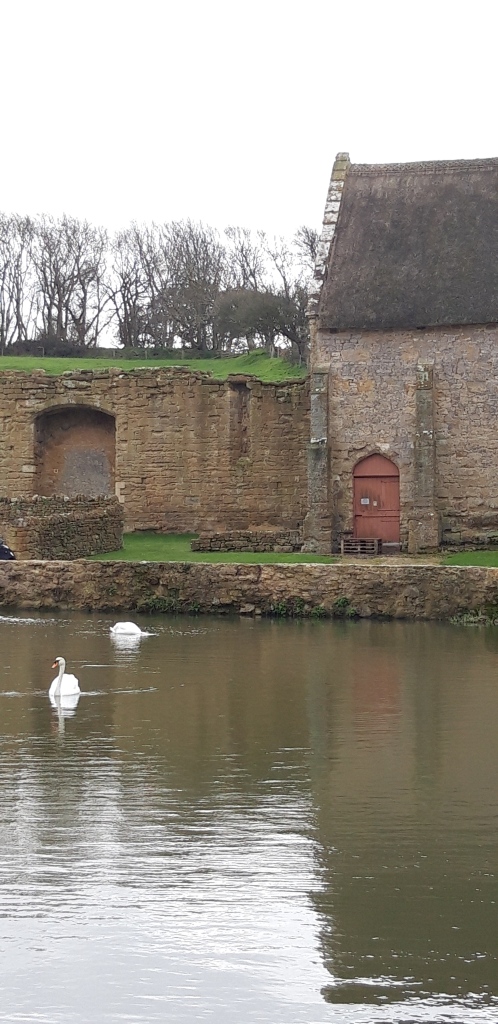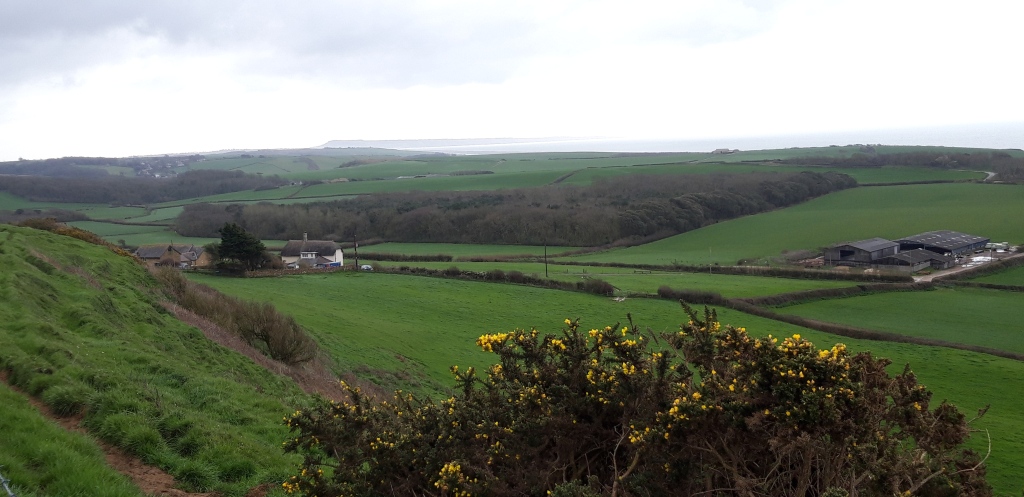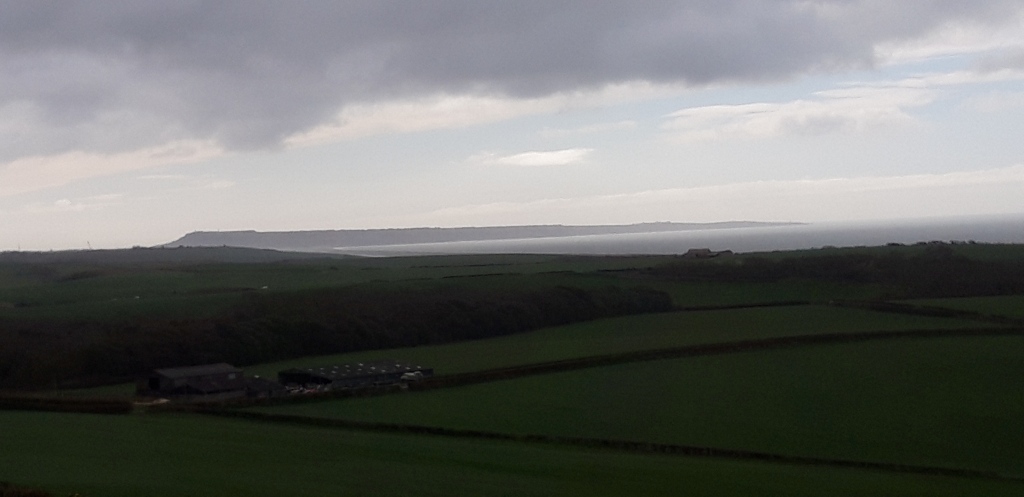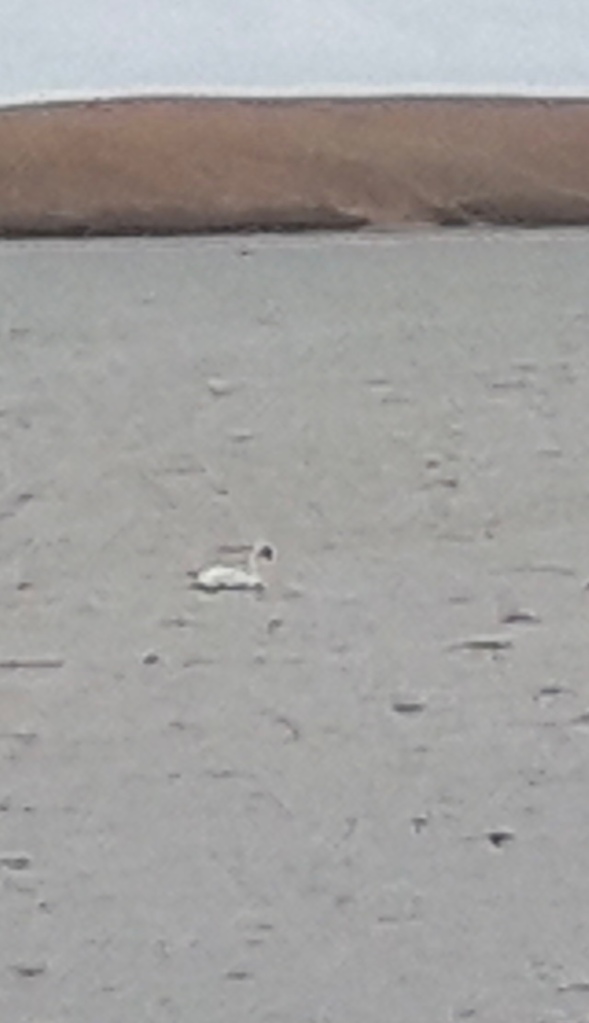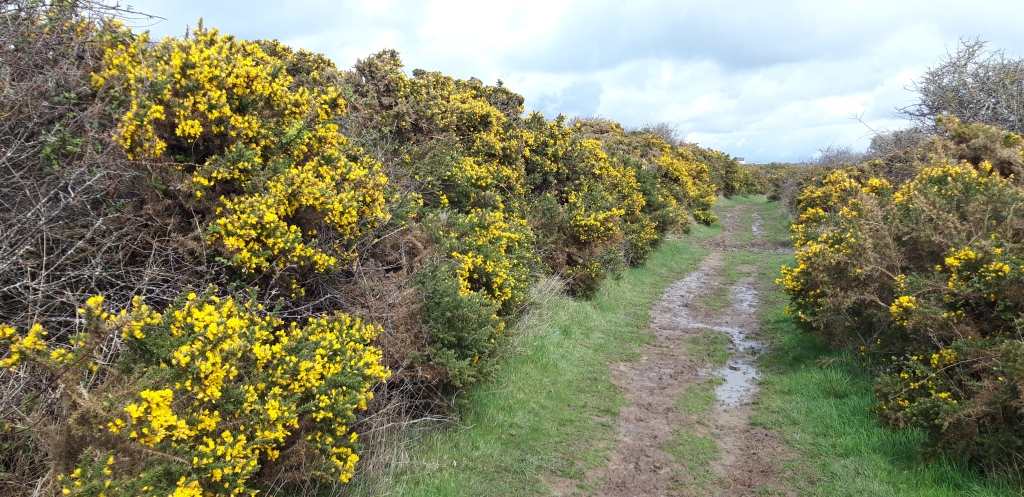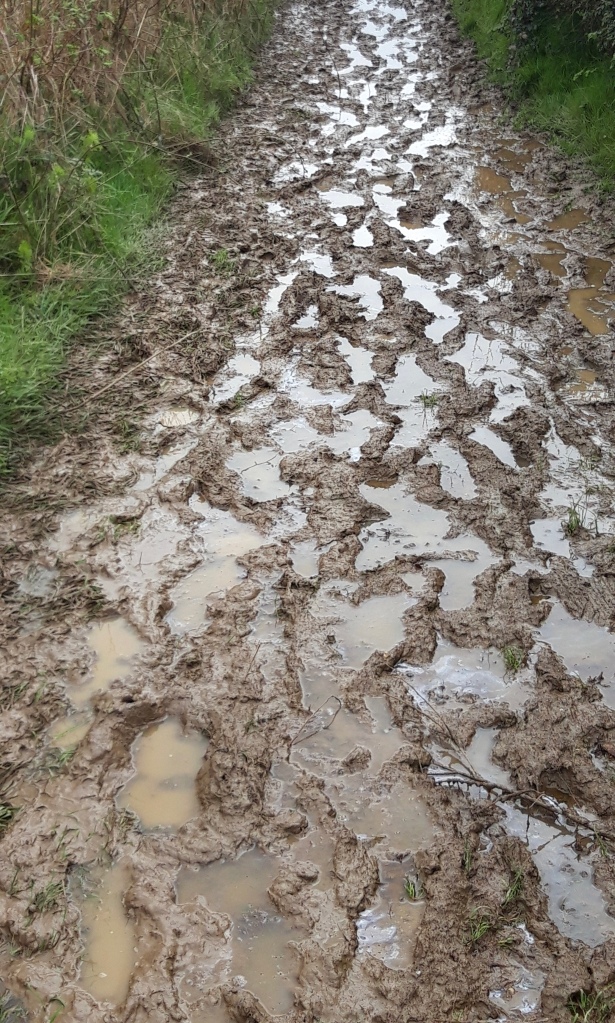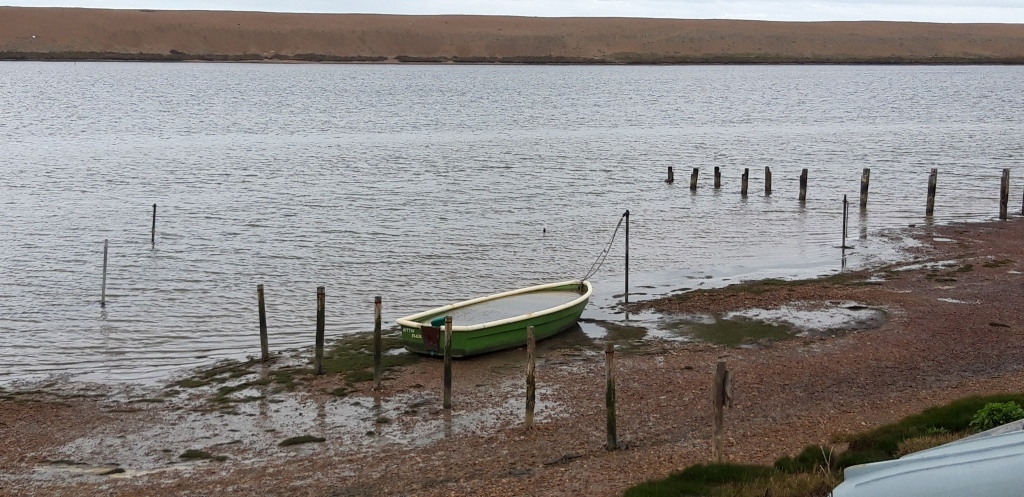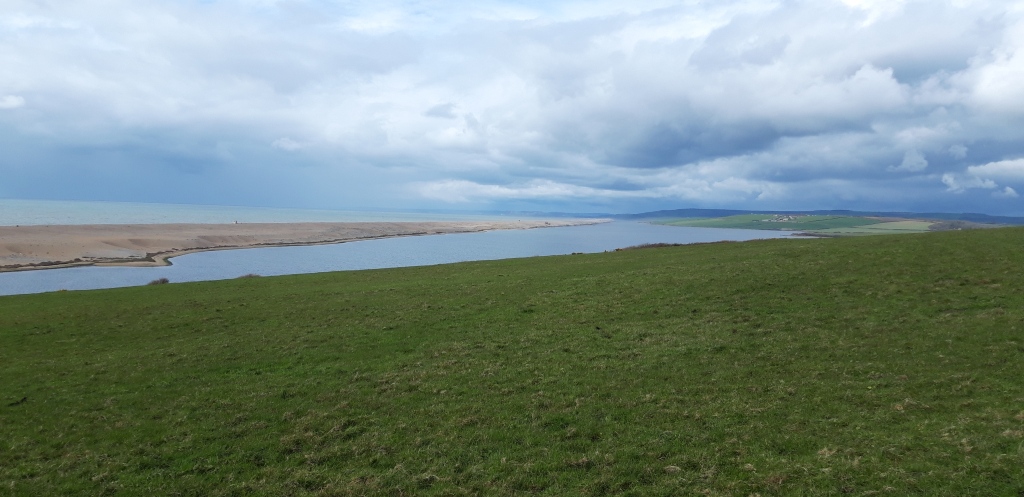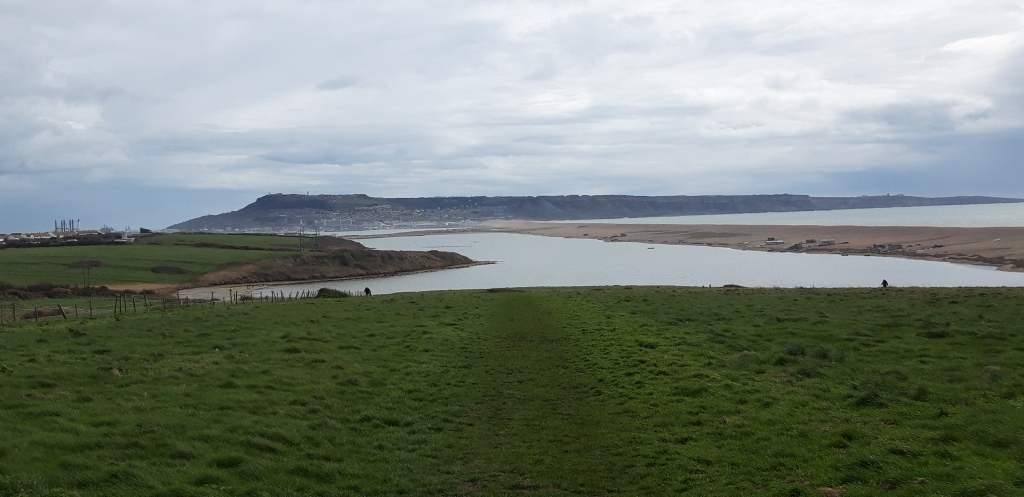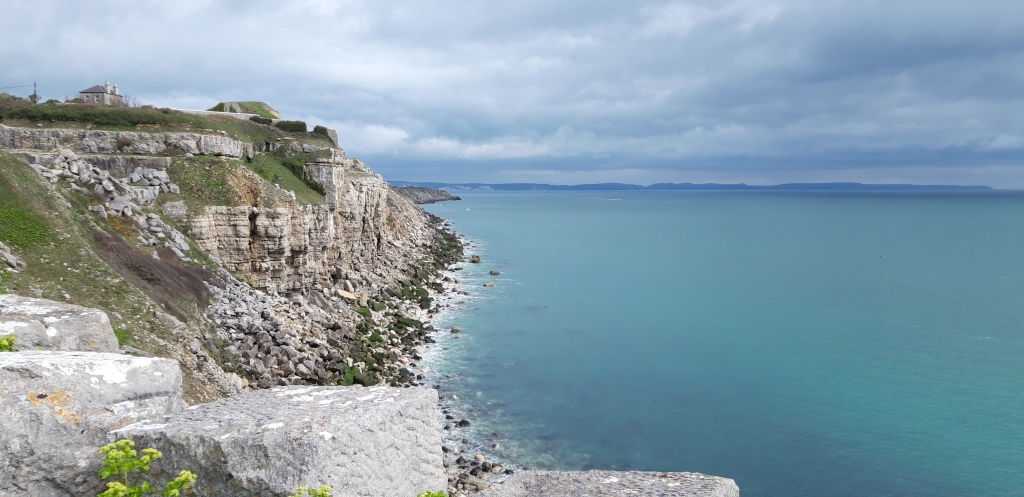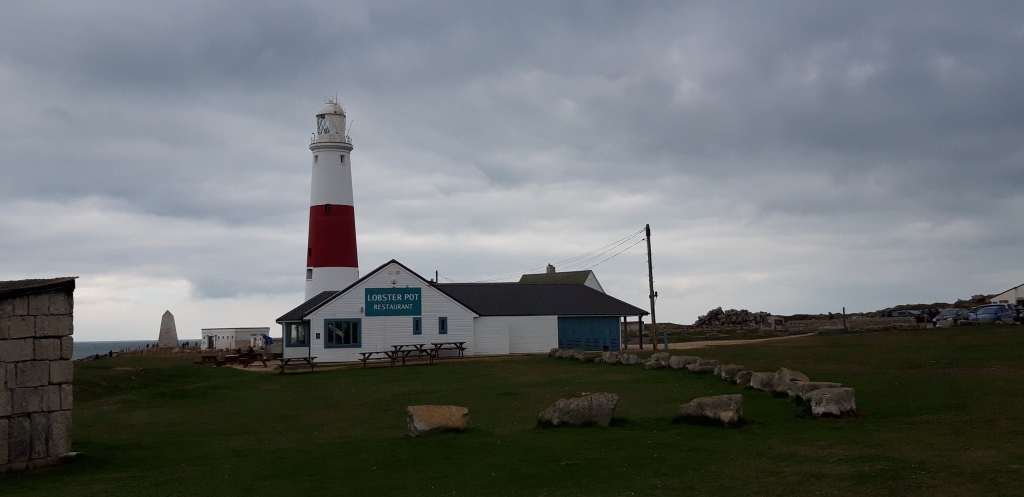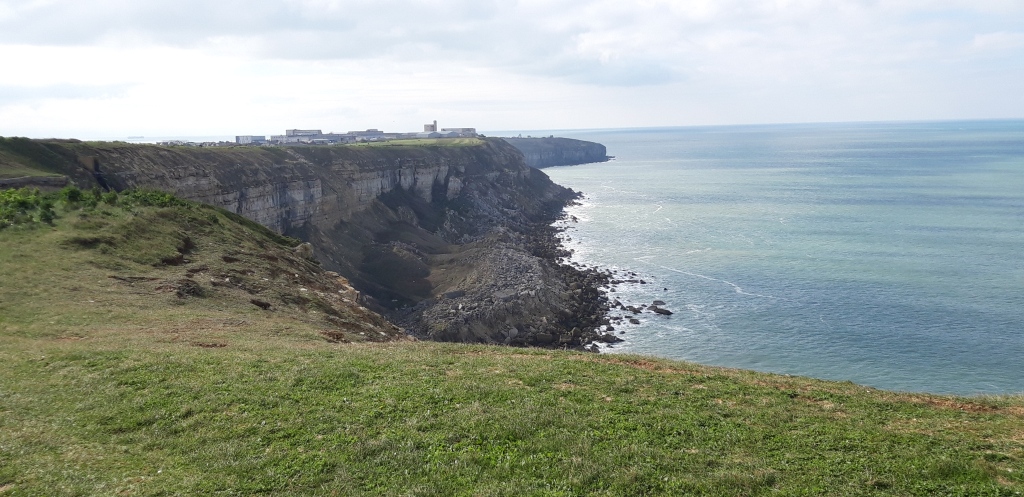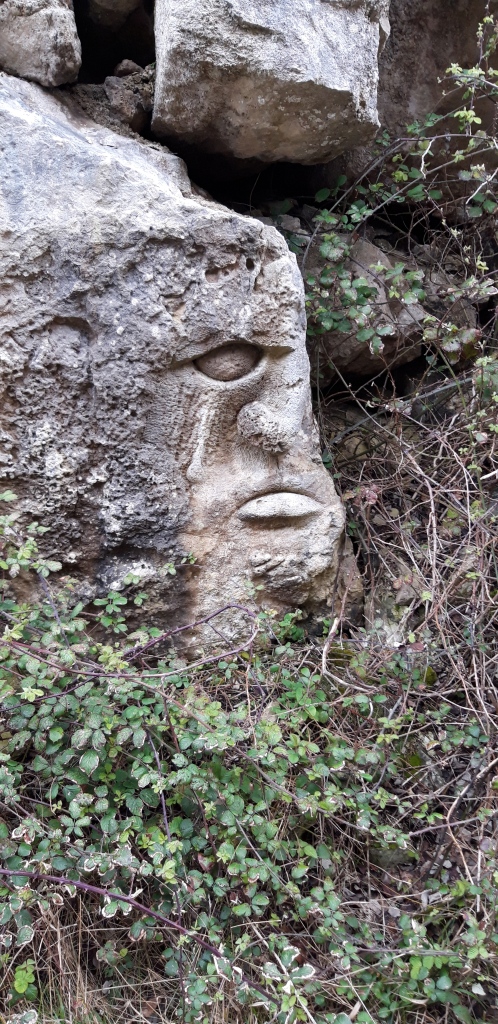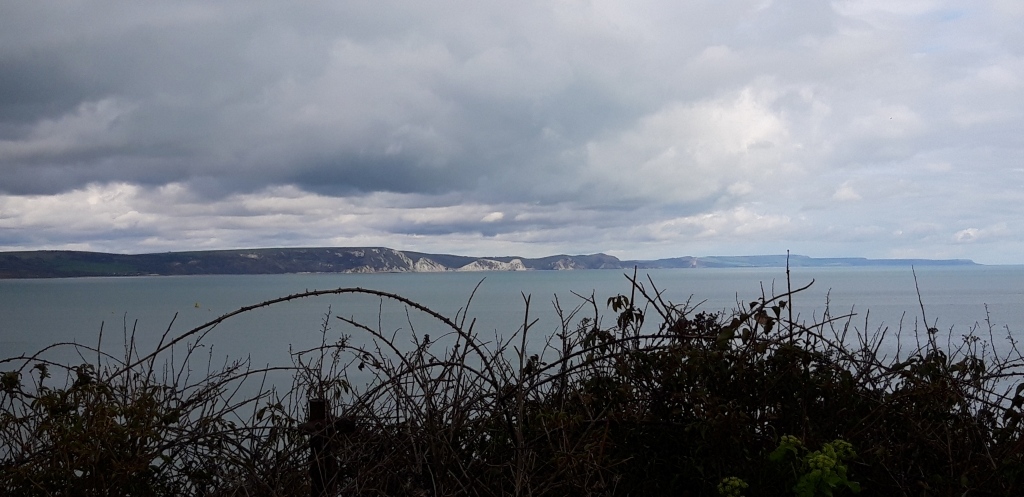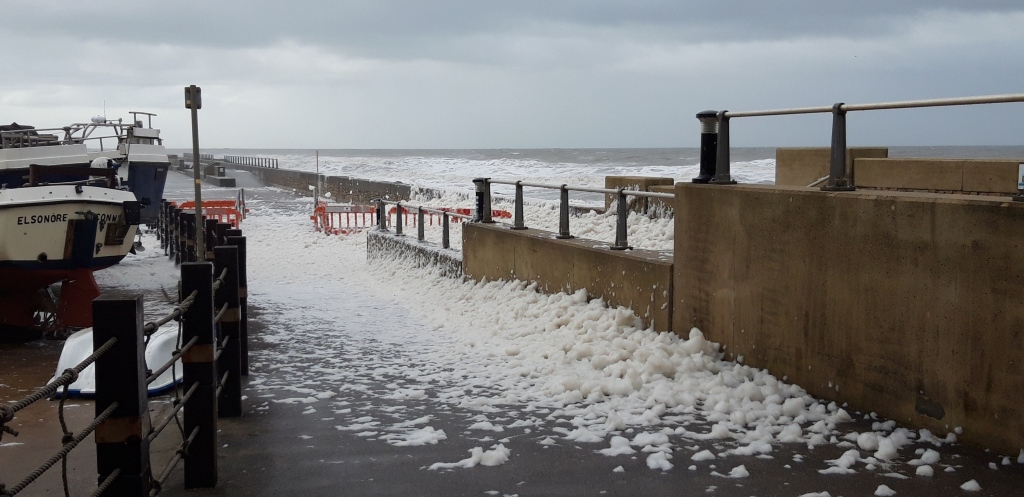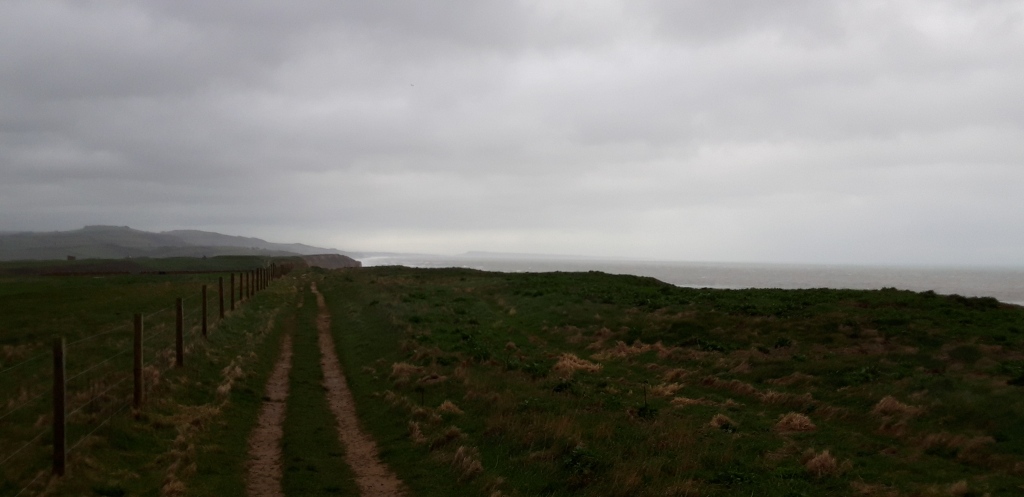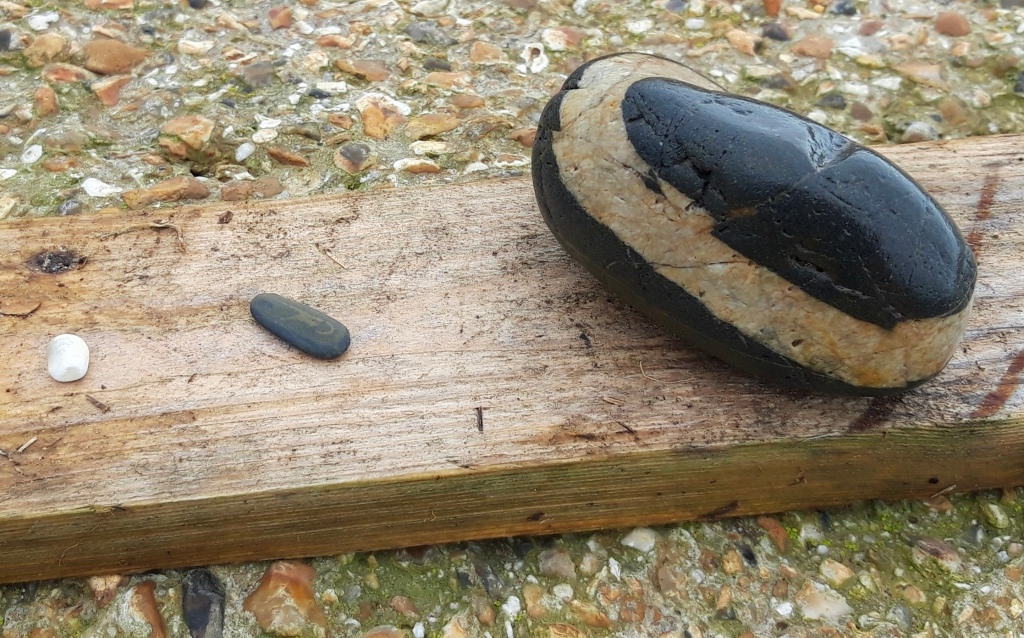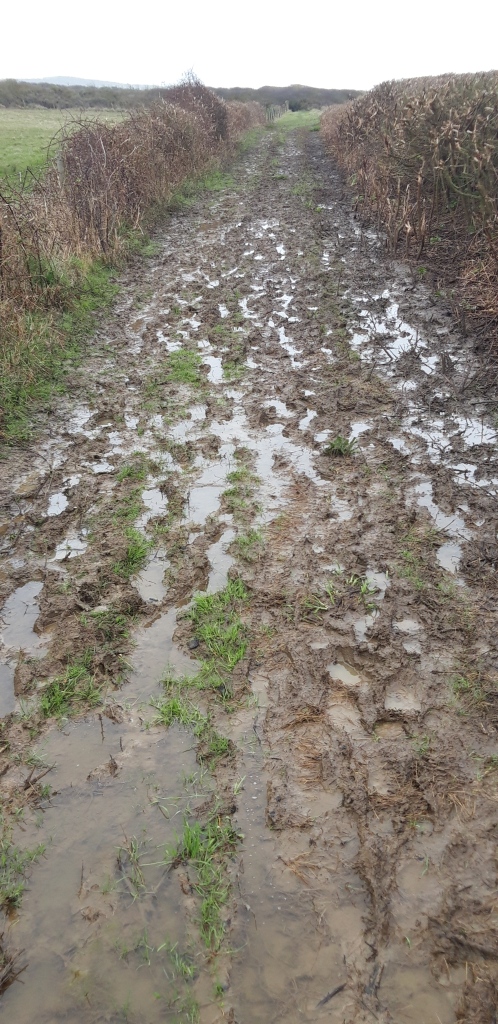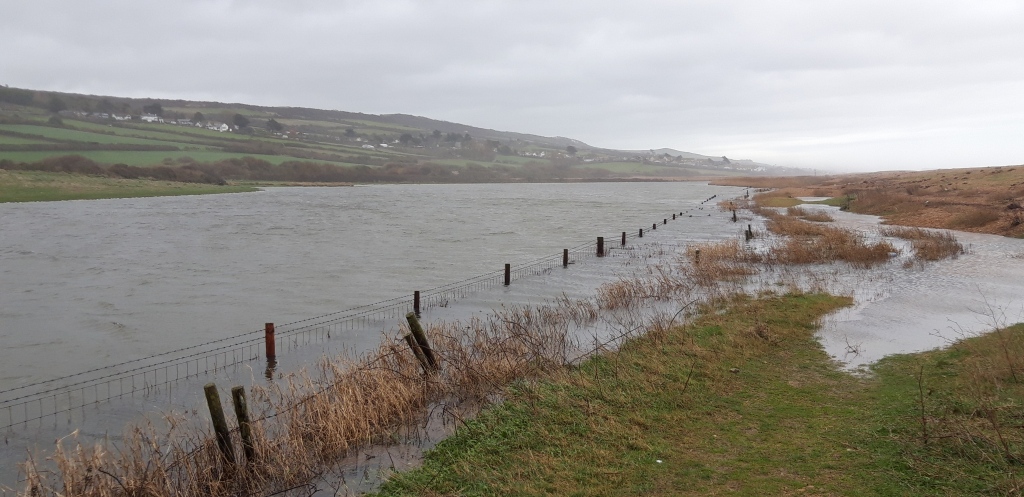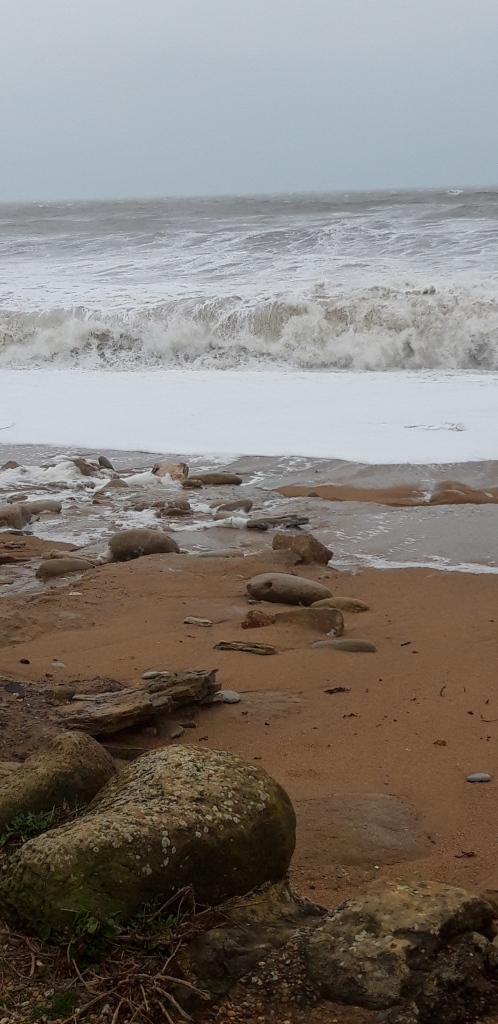Abbotsbury to Weymouth
34,000 steps
Isle of Portland
28,000 steps
Today’s walk is described by the guide as “easy.” And so it would be if I didn’t stupidly try to do it all before lunch.
When I set off from Abbotsbury, I’m pleased to find that my muddy boots have dried. Ready to gather more mud. The morning is fresh – warmer than yesterday, with much less wind and no sign of rain.
I start with a walk down a pleasant daffodil-fringed lane, accompanied by the relaxing sound of running water in a stream beside the road, and frisky chickens jeering at me from a nearby yard.
The Swannery has an enticing coffee shop, which I hate to pass up. But it’s way too early. Half a mile on, a sign sends me off the road and up a hill through a field and the real walking begins. I anticipate mud.
I can definitely feel the weight of Chesil Beach in my calves. And my rucksack has got heavier in the night. But overall, I’m upbeat and positive. It feels like the worst of the weather is behind me. Today’s walk is largely inland from the Fleet Lagoon, through rolling fields and easy hills.
A short walk takes me to the top of Linton Hill, from which I get a sumptuous view of the coast ahead. The Isle of Portland is now clearly visible – a thin wedge, looking like a doorstop propping open the English Channel, or the snout of a half-submerged sea monster dozing at the end of Chesil Beach.
Walking for a while is along a flat, grassy ridge, with great views of the sea and Chesil Beach. But the Path soon dips right and heads toward the coast, and lower ground. Descending from the ridge comes at the price of the mud reasserting itself. At first, it’s short of the Somme-like conditions that I snorkelled through yesterday (but sadly, this doesn’t last).
I hike through flat fields, accompanied only by birdsong, before the Path makes its way down to the inland shore of the Fleet lagoon. This part, Rodden Hive, is a nature reserve. Many birds are pictured on a sign. But all I can see is a solitary swan, diving for sea grass.
On this low ground, the mud soon becomes tedious. I pass a walker coming the other way.
“It doesn’t get any better, I’m afraid,” he says, gesturing back where he’s come from. “It’s horrendous.”
He’s not wrong. Let’s face it, if you wanted to find mud, low-lying fields beside a tidal lagoon after days of heavy rain would be a good place to search.
A sign says ‘Ferrybridge 7’. I walk on and twenty minutes later see another sign claiming that Ferrybridge is now half a mile further away. A little further, I see a sign claiming it’s now five and three quarter miles to Ferrybridge. I guess you just can’t trust signs.
You can’t trust paths either. Just when I think I’ve seen all the mud that it’s possible to fit on one footpath, the Path gets muddier. I come to a military firing range. No red flags are flying so I continue. The Path becomes titanically muddy. Some patches look like if I fell into the mud I might never come out again.
I pass Moonfleet Manor Hotel. A sign says ramblers are welcome. As are pirates. Again, foolishly, I don’t stop but just plod on. Moonfleet – a classic tale of smuggling adventure set on the Fleet – is one of those books I don’t remember ever reading, but I feel I know it intimately. Like Treasure Island.
I had planned on turning inland to Chickerel for lunch but it’s still relatively early when I reach the turning. And a sign tells me that Ferrybridge is now only four and a half miles. I decide to plough on, fuelled by a water break and a nut bar.
The mud makes progress slow and I can feel fatigue setting in. My calves still ache from the Chesil exertions.
A sign tells me that the Fleet is the largest lagoon in north west Europe. I can believe this because I seem to have been walking along its muddy shoreline for at least a week.
As is the way of the Path, it seems like I will never reach Ferrybridge, but suddenly I’m there. Despite the perils of the mud, I’ve made fast progress. There’s a price to pay: my feet are sore and a blister has appeared on my palm, from the tight grip I’ve had to keep on my stick to keep myself from being swallowed up by mud.
It’s an easy walk around Portland Harbour and into Weymouth.
A blister has checked in on my right foot. Not bad – end of day three of this trip and the first blister has only just arrived.
The guide had promised me outstanding beauty, with unique views of Chesil Beach and the Fleet. But looking back on the day it was a bit – well – dull.
And did I mention the mud?
Next day is quite a contrast. At first, I had dismissed the fact that the coast path technically ran around the edge of the Isle of Portland. Why would I want to walk 13 miles just to be back at the same point? For a long time, I assumed that I would reach Weymouth and continue east.
But then I saw the appeal of staying two nights in Weymouth, leaving my stuff in my room, and having a day’s walk WITHOUT THE RUCKSACK. Added to the mix is the fact that Big Sister has come down from Wiltshire to do the Portland walk with me.
Also add to the mix that there’s no rain. The wind has died down. And there’s even some sunshine. And a lot of the Path around Portland is firm and level, with great views of Chesil Beach and the coast east of Weymouth.
It turns out to be a lovely stroll around the island, with a break at the lighthouse for coffee and Dorset Apple Cake.
Portland has two prisons and a lot of quarries, one of which is now disused but repurposed as a sculpture park.
One particularly spooky character stays with me during the day.
I end up back in Weymouth, with a view of the coast that lies ahead. I have walked 590 miles of the Path, with now a mere 40 miles to the end.
I don’t know how I feel about that.

